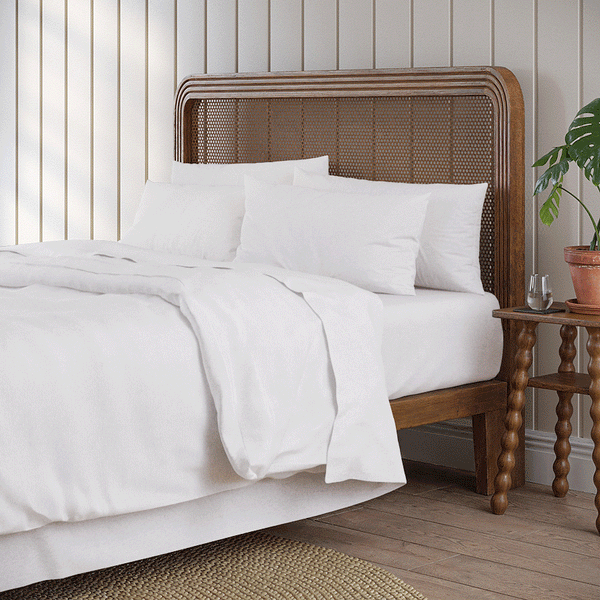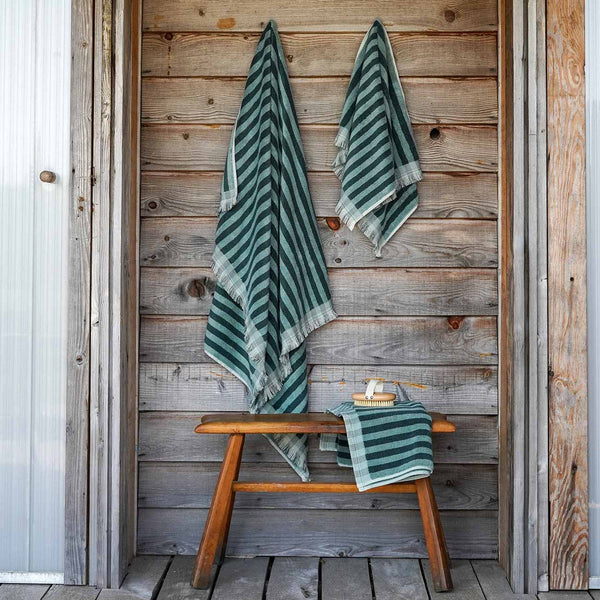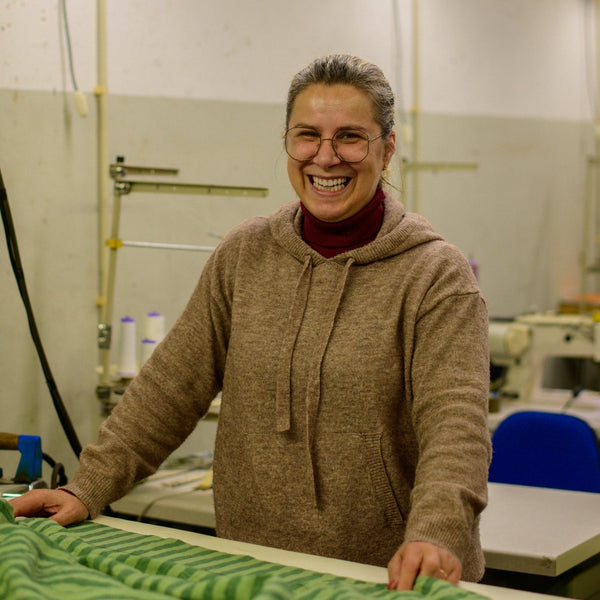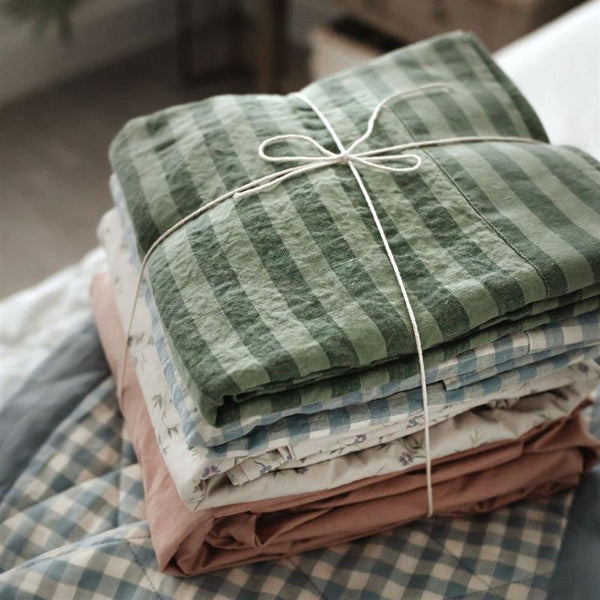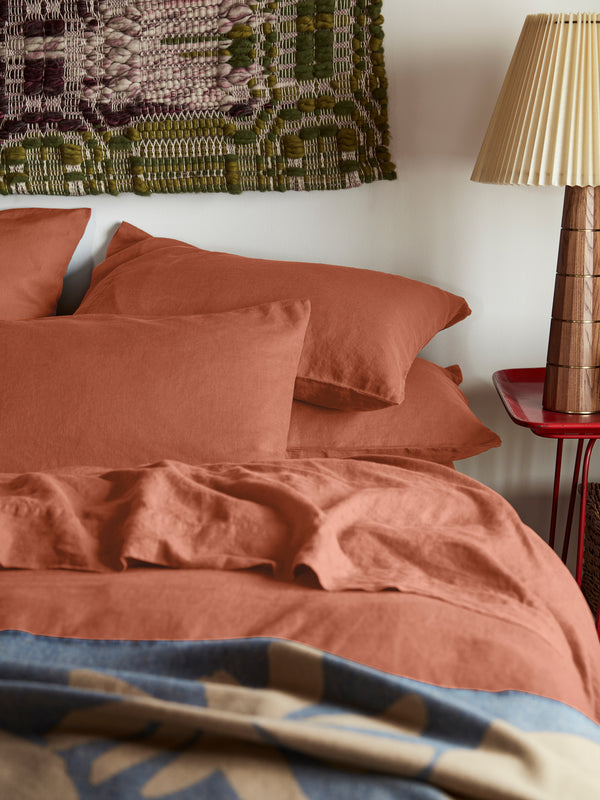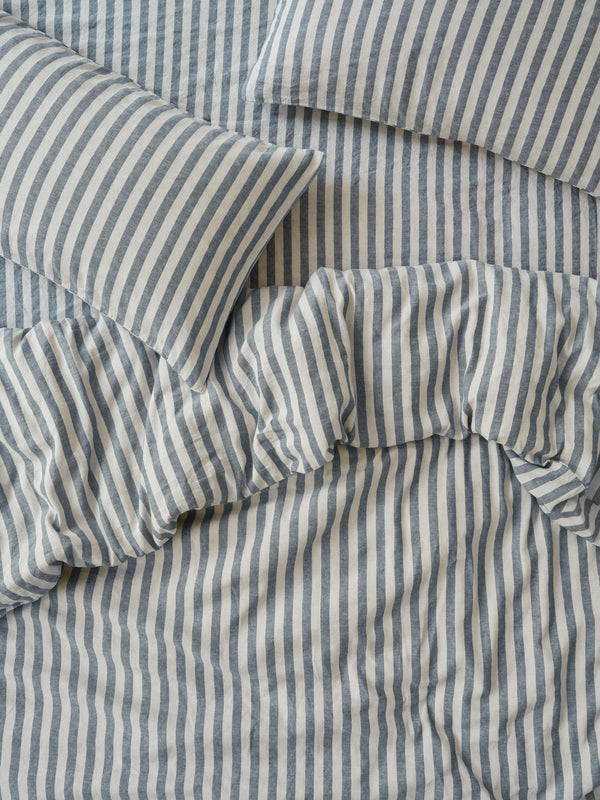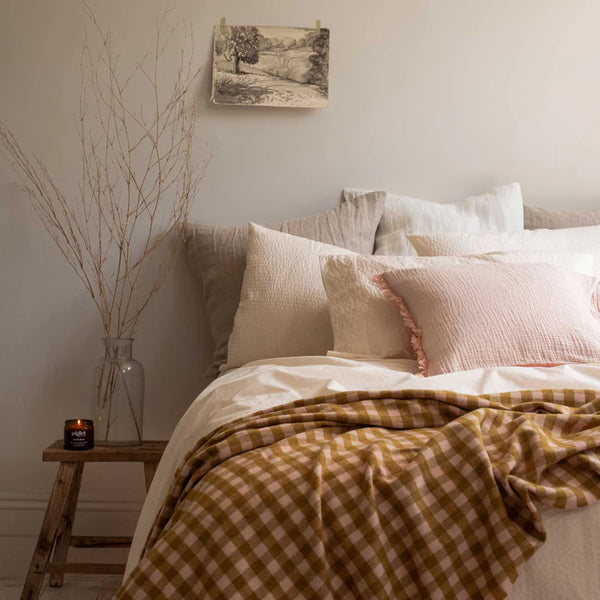As the saying goes, “Change begins at home”, and there are countless ways to create a more sustainable space without compromising on style. Whether choosing soft furnishings woven from natural materials or upcycling unwanted items to reduce waste, everyone can make more conscious design choices. Even the smallest swap can have an impact, so let’s use our collective power and try to do our bit. To get started, we’re sharing five easy tips for styling your home more sustainably.
1. Refresh furniture with a lick of paint
First and foremost, use what you already have. Rather than discarding your old furniture and purchasing new items, think about how something can be repurposed or refreshed. Can you upholster that old chair in a new fabric? Swap out the dated hardware on your kitchen cabinets? Or simply give those side tables a new lease of life with some paint?

Upcycling is at the heart of creating a conscious home, and taking an old piece of furniture and customizing it is a great way to reduce waste and create something unique to you. A lick of (non-toxic) paint can work wonders in transforming neglected pieces from drab to chic, and you can coordinate items with the colors of other soft furnishings in your space, too.
2. Add greenery using locally grown plants
Plants are a great way to add a natural and organic feel to your interiors, but they aren’t without their environmental impact. It can take a lot of resources to grow houseplants, and depending on where they are cultivated, your plants might clock up a fair few ‘plant miles’ on their journey from the grower to the supermarket.
When searching for the perfect plant to elevate your space, consider shopping at a local flower shop or garden centre. You’ll support nearby farmers and florists, and locally-grown plants tend to be hardier than those grown abroad. This is because they are propagated from seeds in a similar environment, so they are better adjusted to the soil and climate and are more resistant to disease.
To shrink your carbon footprint further, try growing plants from seed or cuttings at home!
3. Opt for natural materials over synthetics
If you’re buying something new or second-hand, pay attention to what the item is made from. Products crafted from natural materials are often more sustainable than synthetics. Opt for soft furnishings made with cotton, linen, or jute, and pick large furniture items made from reclaimed wood, stone, or metal.

Natural fibers tend to have a smaller environmental impact than synthetic fibers since they don’t use as many chemicals during production. While synthetic fabrics are usually derived from fossil fuels, natural fabrics rely on renewable resources. Linen, for example, is made from the cellulose fibers of the flax plant. Flax doesn’t require much water to grow, and every part of the plant is used for production, meaning there’s zero wastage.
4. Choose high-quality, durable pieces
Whether you’re replacing your mattress, or updating your living space with a new cushion, invest in long-lasting, durable pieces, and you’ll enjoy them for years to come. If you choose quality over quantity, there’s less chance you’ll need to replace them later down the road, keeping more products out of landfill, too.
Some fabrics, like linen, also get better with age. We like the idea that our linen bedding will be passed down from generation to generation. Linen is naturally thermoregulating, making it suitable for both summer and winter, eliminating the need to invest in separate bedding sets. Buy well, buy once!
5. Swap out single-use items
Lastly, consider the everyday products you use in your home, and see if there’s a more sustainable alternative. You could switch liquid soap for bar soap to reduce your plastic usage or say goodbye to cotton pads in favour of reusable washcloths. Look for those made from sustainable materials such as BCI cotton or bamboo.

No matter how small the change might seem, remember that the more people make the swap, the bigger the impact!
